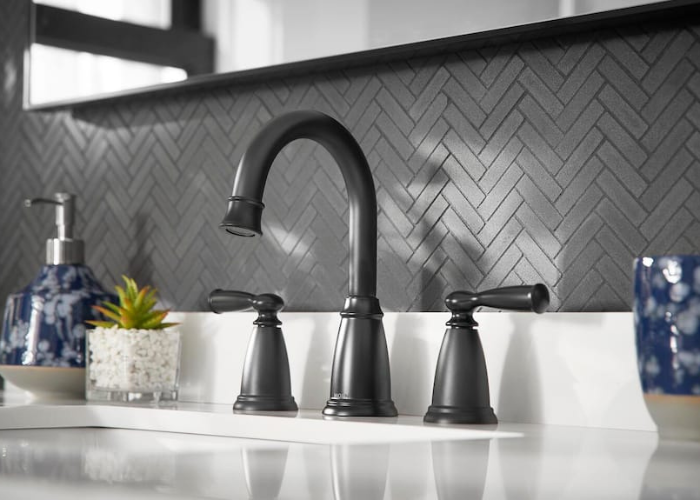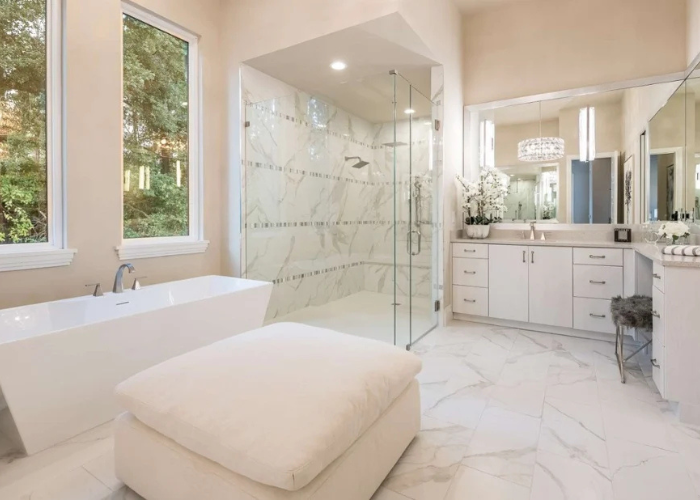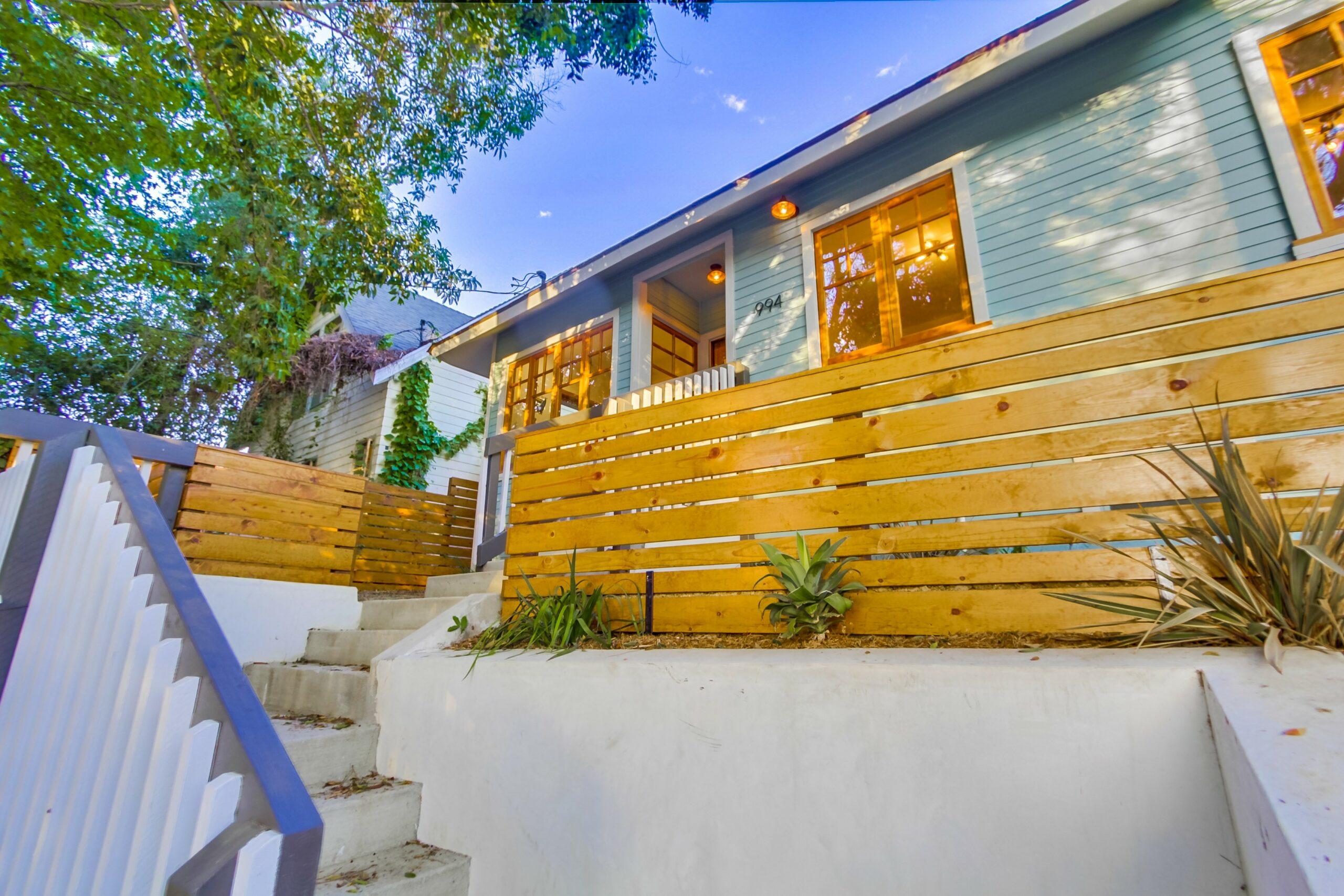Remodeling a bathroom is something that sounds like a small undertaking. After all, it’s just one room, and unless you are living in a mansion the odds are that your bathroom is not particularly cavernous.
You still may be curious as to how long a bathroom remodel may take. Here are the factors you need to consider so you can have a working idea of how long your bathroom remodel might take.
Project Scope: Setting the Stage For Your Bathroom Remodel
The first thing you need to know before you can get an idea of how long your bathroom remodel will take is the scope of your remodeling plan. This means establishing your vision for how you want your bathroom to look when it is finished.
If you are wanting to simply update the paint or wallpaper in your bathroom, then you could be looking at a matter of days or weeks. If you are doing a complete overhaul of your bathroom then you could be looking at months of work. Defining your scope early on can help you set expectations.
Bathroom Size: A Key Duration Factor
Arguably, the most important factor that can determine how long a bathroom remodel takes is the size of the bathroom itself. A smaller half bath will certainly take less time to remodel due to having fewer fixtures, more simplistic design, significantly less space.
Full bathrooms, on the other hand, are typically larger and have more extensive features such as bathtubs or showers. This means you will likely spend a significantly long period of time remodeling.
Design and Planning
A common mistake that people make when gearing up to do a bathroom remodel is not factoring in the time it takes to come up with the concept, designs, and plans for the bathroom. This process covers everything from speaking with potential designers to selecting necessary materials.
Permit Acquisition: Navigating Legal Requirements
Before you can begin your remodel, you will have to obtain the necessary construction permits that could affect your start date. Your location and the complexity of the remodel can affect the time frame in which you receive permit approval.
With local regulations to ensure that you have enough hubtime to acquire your permits. This can prevent unexpected delays and keep you on schedule.
Contractor Availability: Scheduling Your Project
Before the work can begin on your remodel you will need to find and vet a contractor. You want to seek contractors who are considered reputable, so you will need to look at reviews and get recommendations from people you trust and create a short list of potential hires.
Once you have selected your contractor you need to discuss lead times and schedule constraints that you may run into during the bathroom remodel. Doing this will prevent potential problems down the road.
Demolition and Removal: The First Physical Stage
Now that you have done all of the prerequisite work the physical work can now begin. That means demolition. This process could take a few days up to a week, depending on the size of the bathroom and how complex the demolition needs are. You also need to account for the time it takes to dispose of debris.
Structural Changes: Altering the Blueprint
When you make structural changes, such as altering windows, walls, or doors they will have to be time devoted towards coordinating the various tradesmen your contractor may bring it.
The stage can severely impact remodel time, particularly if there are new problems or complications that arise. Effective communication is necessary at this time.
Plumbing Alterations: Essential For Functionality
Plumbing is one of the most significant processes in the bathroom remodel. It is not uncommon for the plumbing stage to extend a remodel’s timeline, especially if there is outdated plumbing work that needs to be replaced. It is important to try and factor in the unexpected in your scheduling.
Electrical Work: Wiring Your Bathroom for the Future
Electrical work requires a particular degree of care because of safety and timing factors. Electrical work needs to be coordinated with the other stages of the remodel to ensure that the workflow is never interrupted.
Electrical upgrades need to be completed. This means that scheduling must be precise in order to prevent any unnecessary pauses in progress.
Drywall and Painting: Visual Progress in Your Project
Installing the drywall then painting is where you can begin to see the fruits of your labor. Drywall must be installed and properly finished before you can begin the painting process.
You must keep drying and curing times for paint in mind and avoid trying to rush the process. Being in a rush will lead to mistakes and subpar results.
Tile and Flooring Installation: Laying the Foundation
Installing the flooring and tile can be tricky because it must be done in a timely fashion but it must also be done with care. Tile work must be completed before any fixtures can be installed in the bathroom.
If you are working with an intricate tile design then you need to allocate enough time to that task, otherwise you run the risk of the project going fast the projected finish time and going over budget.
Fixtures and Features Installation: The Details That Count

Having proper coordination is the best way to ensure that the project is either on time or even ahead of time. This is especially true when you must coordinate the installation of fixtures and features.
If you are installing simple features such as a basic sink, then you will not likely have to allocate a tremendous amount of time. However, if you are installing a high-tech shower system then that will affect the installation time for the other fixtures.
You must coordinate each stage of fixture installation to avoid any disruptions.
Customization and Detail Work: Personal Touches Take Time
You need to allocate additional time for any fixtures, unique tile patterns, or bespoke cabinetry that needs to be installed.
Custom work takes considerably more time than utilizing elements that are pre-made and ready to be installed right off the shelf. However, despite the additional time it takes for custom work, the results are almost always worth it.
Inspection and Final Touches: Nearing the Finish Line
You have now entered the final stage of the remodel itself. You need to factor in the amount of time it will take for any required inspections to ensure that everything is up to code. You also want to make sure you have plenty of time to make any necessary touch ups, adjustments, or final detail work.
Cleanup and Debris Disposal: The Final Phase
Before you can enjoy your freshly remodeled bathroom, you need to complete the last step. You need to allocate time to clean out any construction debris that may remain. This means cleaning the newly remodeled area, and ensuring that there is no dust or hazardous material left.
You must then be sure to coordinate with any waste disposal services that are available to you. Make sure that you follow local law and regulations and that this is done in a timely manner. Following this step will ensure that your newly remodeled bathroom is as safe as it is relaxing.
Give us a call if you’re in the market for a new bathroom makeover, we can help. With well over a decade serving the people with high quality Los Angeles bathroom remodeling.
Sources
- King County. (n.d.). Green home remodel – Bath & laundry guide. Retrieved from https://kingcounty.gov/
- Contra Costa County. (n.d.). California building code: Bathroom remodeling requirements. Retrieved from https://www.contracosta.ca.gov/
- City of San Bruno. (n.d.). Building requirements for bathroom remodels. Retrieved from https://www.sanbruno.ca.gov/
- City of Rancho Palos Verdes. (n.d.). Water-conserving fixtures in bathroom remodels. Retrieved from https://www.rpvca.gov/
- Village of Wheeling. (n.d.). Building codes for bathroom remodels. Retrieved from https://www.wheelingil.gov/
- City of Oakland. (n.d.). Permit requirements for bathroom remodels. Retrieved from https://www.oaklandca.gov/













